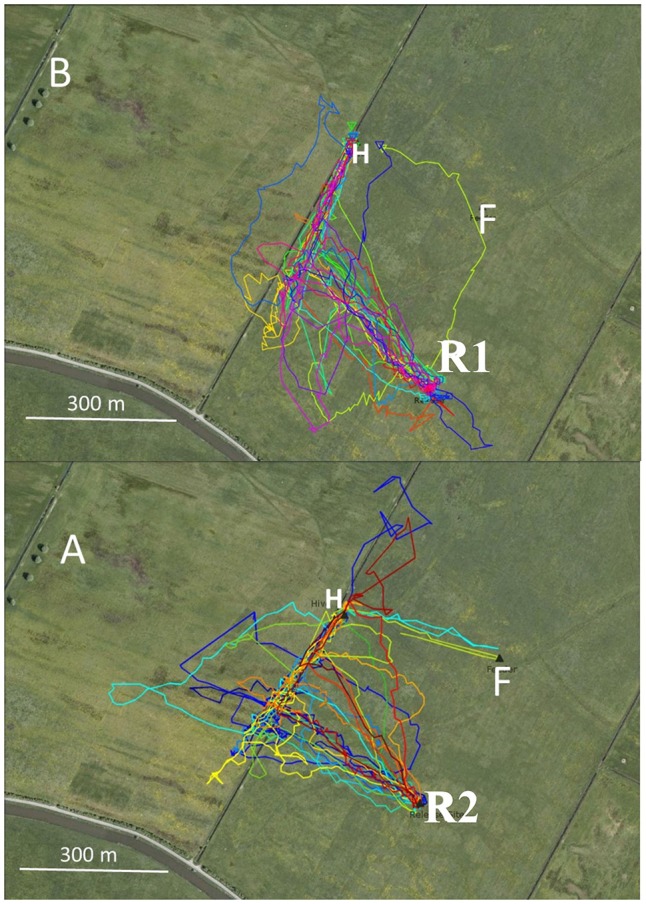Figure 2.

Flight trajectories of homing bees that were trained from two hives (H) to respective feeders (F) in two consecutive years (2011: B, 2012; A). The hives were located close to an irrigation channel. The respective feeders (were equidistant from the hives. The release site R1 in 2011 was located at the same distance from the irrigation channel as the distance between the hive and the feeder. Therefore, the bees released at that site reached the irrigation channel at the end of their vector flight. In 2012, the release site R2 was further away from the channel leading to a termination of the vector flight before reaching the channel. These test conditions allowed us to ask if the irrigation channel was a necessary guiding structure for homing. Statistics: 2011 first turn correct: 22/25; 2012: 12/22, P < 0.05; multiple turns until reaching the hive: 2011; 3/25, 2012: 6/22, P < 0.05.
